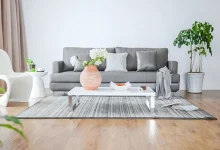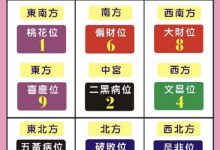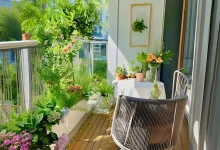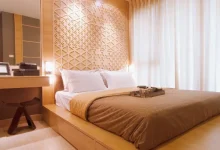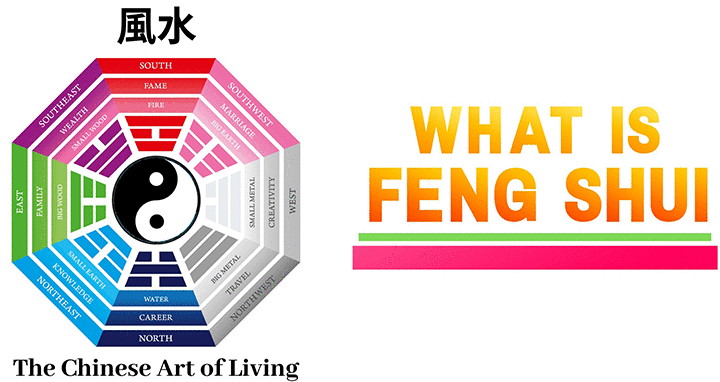
Feng shui (Fung Shway) is the ancient Chinese art and science of achieving balance within an environment. Literally meaning “wind – water”, feng shui incorporates the use of environmental, psychological, mathematical, aesthetic and astrological concepts of space and energy flow. Feng shui remedies are specific to each individual and those who occupy the same space (family/co-workers). This is achieved through an analysis of the individual(s) natal calendar using the Four Pillars Astrology, and a bagua map.
Four Pillars Astrology
The Four Pillars Astrology, also known as the ‘twin of feng shui’, works with the same principles as feng shui. This system of analysis has existed in China as far back as the Han Dynasty (over 2,500 years) as one of the most effective and accurate systems for energy evaluation and destiny reading. The Four Pillars reflects the natal, or constitutional condition of an individual. Feng shui, on the other hand, is based on the environmental energy which impacts people’s lives in many ways. Because we believe everyone is unique, no two individuals share the same destiny.
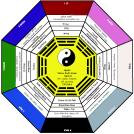 Bagua
Bagua
The Bagua (ba – gwa) is an essential instrument used for analysis in feng shui. When a space is mapped using the bagua it indicates specific correct orientation and placement in the environment.
The quality of sunlight that a place received had a large impact on people’s livelihoods before electricity. So, in eastern feng shui the map is an octagonal diagram which uses compass directions to map out a space or property.
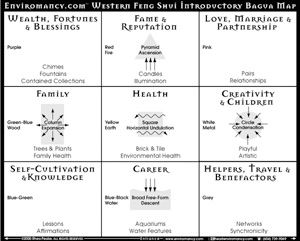 With the technological advancements we have today our lives don’t depend as much on sun or the seasons. We have more flexibility in choosing our homes and work spaces. Therefore, western (modern) feng shui practitioners use the front door as the point of reference for remedies. The western feng shui bagua map is a square diagram which is divided into nine guas (areas).
With the technological advancements we have today our lives don’t depend as much on sun or the seasons. We have more flexibility in choosing our homes and work spaces. Therefore, western (modern) feng shui practitioners use the front door as the point of reference for remedies. The western feng shui bagua map is a square diagram which is divided into nine guas (areas).
Energy (also called ‘Qi’) is the power of the universe which surrounds us every day everywhere. Energy is carried through the air and is held in water. Both elements are used to carry energy, thus giving the name ‘feng shui’. Having “bad feng shui” is not how someone or a space would be labeled, but rather energy can drain or add to a person’s surroundings affecting them in numerous ways. These ways include health, career, abundance, family, etc. It is not only a practice related to physical space, but also the inhabitants of the space itself, as both are interconnected.
Yin and Yang
Few ideas capture the essence of balance as elegantly as the ancient concept of Yin and Yang. These opposing forces – light and shadow, summer and winter, masculine and feminine – aren’t locked in conflict, but rather move in a perpetual embrace. Picture them as two halves of the same whole: neither can exist independently, yet together they create equilibrium. Like the way winter’s stillness prepares the earth for summer’s abundance, these energies work in rhythm rather than rivalry. Their interdependence reminds us that true harmony arises not from eliminating contrasts, but from honoring their symbiotic dance.
Wuxing – The Five Elements
Long before modern science categorized the natural world, Chinese philosophers identified five elemental forces shaping existence: Wood, Fire, Earth, Metal, and Water. More than static symbols, these elements tell a story of perpetual transformation. They breathe life into each other through cycles of creation – like how flames turn wood to ash (nourishing earth), or how water condenses on metal surfaces under cool night skies. Yet they also temper excesses through natural checks – earth dams floodwaters, water quenches runaway fires, and so the dance continues.
Living with the Elements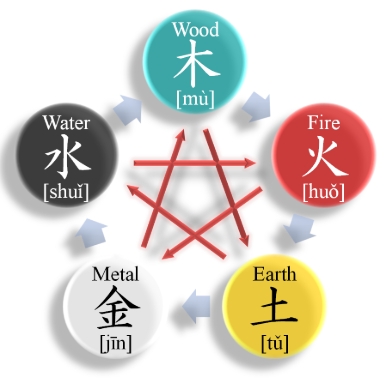
Traditional Feng Shui translates this elemental wisdom into practical design. Practitioners act as environmental translators, decoding how spaces “speak” through colors, textures, and layouts:
- Morning light filtering through leafy plants in eastern areas channels wood’s growth energy
- Vibrant red accents in southern spaces mirror fire’s dynamic pulse
- Kitchens overwhelmed by fiery energy (think aggressive lighting or cluttered appliances) might find calm through flowing water features or deep blue tones
This philosophy extends beyond decoration – it’s about aligning our artificial environments with nature’s timeless patterns. By observing how elements nurture or restrain each other, we create spaces that don’t just look pleasing, but actively support wellbeing. The ultimate goal? To dissolve the illusion of separation between human habitats and the natural world, letting our homes become living maps of cosmic rhythms.

 Feng Shui Mystery
Feng Shui Mystery



